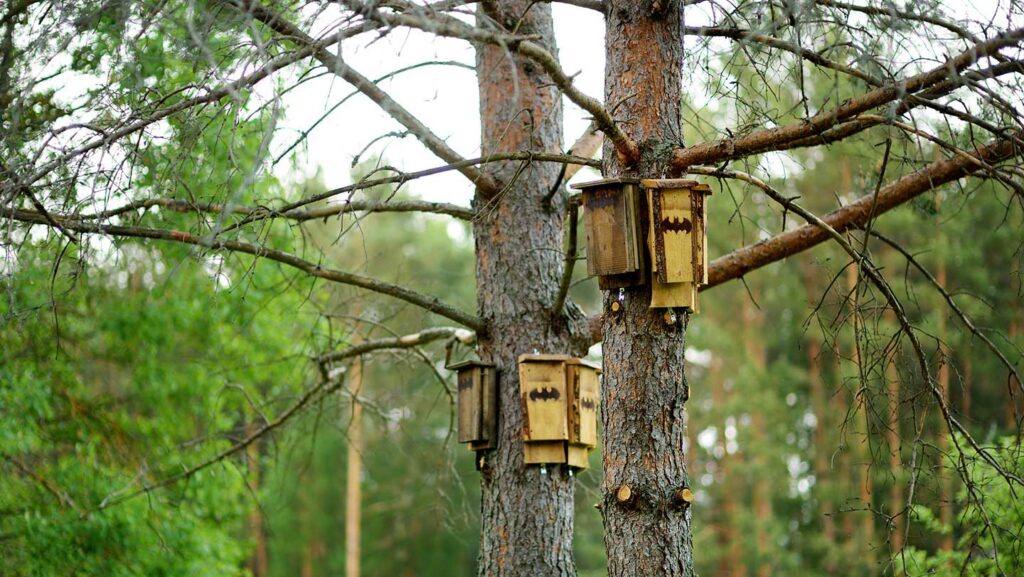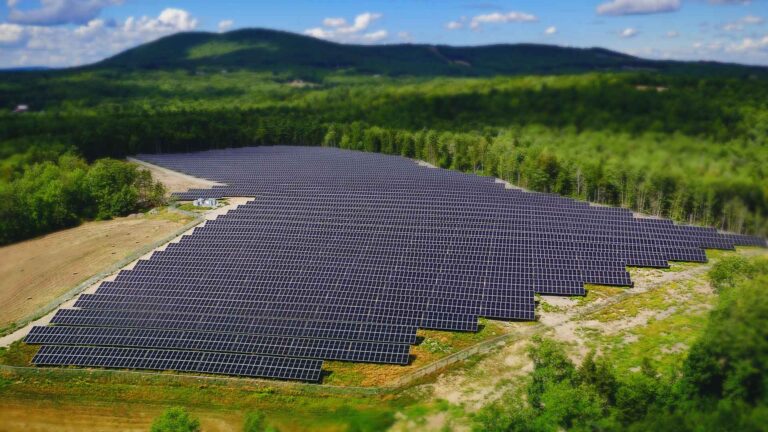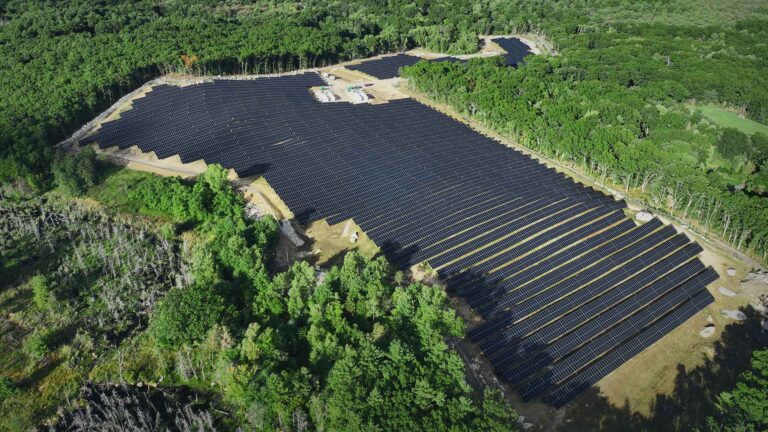Reaching Renewable Energy Goals is Only Part of the Equation
A push toward establishing and reaching renewable energy goals has motivated creative and different ways of decreasing our reliance on fossil fuels. At Rewild, we’ve pioneered a way to maximize the use of solar energy while also expanding land conservation. This dual approach to sustainability has given both landowners and communities a more planet-friendly approach to pursuing renewable energy solutions – and has enhanced our company’s impact on the environment beyond our own work.
Expanding Our Use of Solar Energy Without Sacrificing Land
Solar arrays have long received some criticism for taking up space on land or on top of homes and buildings. Despite these arguments, solar use has continued to grow, but not at a fast enough pace to supersede the use of fossil fuels in electricity production.
Since its inception, Rewild has been on a mission to shift our planet away from fossil fuels, consequently lowering environmental damage and reducing contributions to global warming. We help bring clean, renewable energy onto the electric grid and work with states and communities to get them closer to achieving their renewable energy goals.
Like any form of development such as a shopping plaza or condo complex, solar installations will have an impact on the land on which they are placed. In an effort to combat what could be a negative side effect of an otherwise planet-positive move, we work hard to ensure the opposite; in fact, we largely improve the land over time because of how we manage each solar installation.
Our intended approach to land conservation through solar installations looks like this:
- Aiming to select solar sites that are already struggling, such as gravel pits, brownfields, and the tops of landfills.
- Strategically avoiding already sensitive lands and ecosystems, such as old-growth forests, large wetlands, or habitats for endangered species.
- Improving the land over time by cleaning up environmental damage and planting wildflowers, grass seed mixes, and other supports for important pollinator species beneath the solar panels will encourage growth and biodiversity on the land.
- Fostering a vibrant habitat full of food for bees, butterflies, and other important pollinator species will help the land continue to thrive in concert with the existence of the solar panel.

Beyond Solar: A Two-Fold Approach to Fighting Climate Change
While improving the land on which solar installations are placed ensures the benefits of solar energy don’t carry negative consequences for the environment, a true planet-positive impact involves all land – not just that which houses solar installations.
Across the world, our lands carry important ecological impacts. We never place solar sites on ecologically sensitive spaces, but we consider these lands important toward our mission regardless.
We want to improve lands where we are working and conserve lands that do the most work for us. This two-fold approach to fighting climate change includes:
- Reducing carbon emissions through solar energy deployment, which we do each time we permit, design, and construct our solar energy and battery storage projects.
- Contributing to the conservation and protection of our lands through annual donations to projects dedicated to permanent conservation. These lands span the world, from the forests, bogs, and rivers of New England to the key connectors and mountains of the Appalachians, and the rangelands of Kenya.
To be sure donations and contributions to land conservation are, in fact, helping make a difference, we rely on experts in the field, like the Nature Conservancy (TNC). Through our relationship with TNC, we receive an annual list of projects the Conservancy is working to acquire for conservation purposes.
Some of these projects are located in the Northeast U.S. where many of our solar projects are, but others are in the southern or central Appalachians of the U.S., or in other countries like Africa, South America, and Southeast Asia.
The list TNC provides details on each project, including the type of land, its ecological impact, the types of animals and plants the land supports, the number of acres that would be conserved, a long-term plan for the land, and the status of the acquisition.
Every project could benefit from a donation, but we prioritize our support based on this information and guidance from The Nature Conservancy as to where financial assistance would make the greatest impact.

More Acreage Doesn’t Always Mean Greatest Impact
The Nature Conservancy is working toward the removal of a dam along the Ashuelot River in Hinsdale, NH. The project only involves the acquisition of a small, one-acre parcel of land on which the dam is sited. However, beyond that one acre, the dam removal is important as it would result in safer passage for many species of fish, and open up a freshwater connection that would support life all along the river and into the Atlantic Ocean.
If we were to only contribute to projects involving large amounts of acreage, we would be missing critical projects like this one that make an important natural impact.
Similarly, the Shenandoah Mountain project in West Virginia is 2,000 acres, but the acquisition we would contribute to is just a small piece of a larger corridor of already-protected lands. Permanent conservation of this specific 2,000 acres would connect a larger 16,000-acre section of lands that support diverse species and their migratory needs. Plus, it would ensure that piece of land would be permanently protected from future development.
Being close to Washington, D.C., development potential is a real possibility and were this land left un-conserved, there would be no way to prevent condos or other structures from impeding a natural home for migratory birds and rare plant species.
Our team is careful to review and consider each project presented by The Nature Conservancy. We want our annual donation to have the most impact on conserving land, supporting a biodiverse ecosystem, benefiting important plant and animal species in a given region, and maintaining critical connections to other key tracts of land.
Protecting the Future
Our partnership with TNC allows us to learn from their experts and ultimately put our donations into lands where the impact will be the greatest. It’s a perfect opportunity for any organization passionate about land conservation to invest in something beyond its own business model.
These investments protect land for the future, endangered species movement and migration, wetlands and headwater rivers, and connections with other conserved lands. No donation is too small – like anything associated with protecting the planet, every little bit counts.
Most importantly, regardless of profession or lifestyle, we all use the land on our planet and rely on it for our everyday lives, even if we’re not always consciously aware of that reliance. We owe it to ourselves, our communities, and future generations to protect key lands and ensure they can continue to thrive and be used. If we can be respectful and responsible stewards of the land, we will continue to benefit from the life they support and the inspiration they provide.




